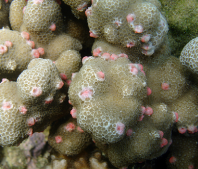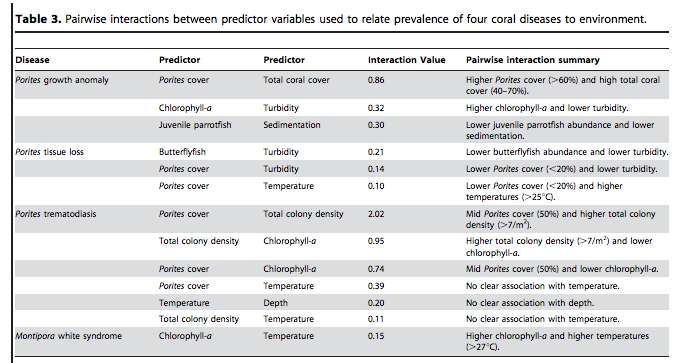Williams, Gareth J., et al. “Predictive modeling of coral disease distribution within a reef system.” PLoS One 5.2 (2010): e9264.
Link

This study uses a boosted regression tree approach to determine relevant factors involved in predicting the spread and Porites growth anomaly and Montipora white syndrome. Boosted regression trees are similar to additive regression models in that the terms considered are decision trees that are fitted with a forward selection process. BRTs provide two key insights from their analysis. First, they demonstrate the underlying relationship between response and predictors and second that establish which predictor has the most influence on the response.
Over two five-week periods (October 2007 – November 2007 & May – July 2008), a disease surveillance survey was conducted within the Coconut Island Marine Reserve. Coral species that were considered important to the local reef community were assessed in their current health status with respect to presence or absence of known coral diseases. Belt transect surveys were used in order to quantify the amount of disease prevalence, and classify the status of observed disease lesions. Environmental factors were collected by either deployed data loggers and observation of biological factors (eg: fish predation) by experts participating in transect surveys. Given the low sample size within the data set, researchers opted for a 10-fold cross-validation for assessing model performance.

Results indicated that Porites Growth Anomalies (PorGA) were primarily negatively correlated with turbidity and depth. Porites tissue loss (PorTL) was driven by fish abundance, temperature and turbidity. Porites trematodiasis (PorTrem) was associated with colony density, fish abundance, depth, and colony cover. Montipora white syndrome (MWS) was associated with juvenile parrotfish abundance and positive correlation chlorophyll-a. Its interesting how little influence temperature had on disease prediction given how temperature is an established driver for other coral syndromes (eg: bleaching).
